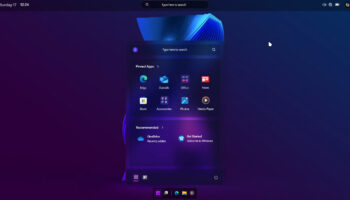Quickly turn JPGs into PDFs

When you need to distribute a particular set of images – or perhaps reconstruct some scanned pages into a digital version of the original document – then being able to combine those JPGs into a single PDF can be very useful. There are commercial tools which will handle this for you, but if your needs are simple then there’s no need to spend big money; the free (for personal use) JPGasPDF could provide everything you need.
The program is compact (a single 572KB executable), with a basic straightforward interface. If you’re in a hurry you could just click the Add button to select your images, the Create button to save the finished PDF, and, well, that’s it -- your document will be saved right away.
Acronis True Image Lite 2013 for local and cloud backup

Acronis International has added a new, cut-down backup tool to its roster with the release of True Image Lite 2013 by Acronis. Roughly six months after debuting the beta version, True Image Lite 2013 gets a final release, providing users with a simple tool for protecting specified folders through regular “non-stop” backups.
True Image Lite 2013 offers users two locations for backing up: a local storage device, such as external or network hard drive, and online through the Acronis Cloud, an optional add-on providing 250GB of internet storage for an additional outlay.
Use Google Fonts offline

Google Fonts is an excellent resource for web designers, with hundreds of top quality open source fonts freely available for anyone to use.
Now, though, you can also easily access and use the same fonts on the desktop, Windows or Mac, just by installing the SkyFonts client. The program requires you to first create a fonts.com account. But with that out the way, SkyFonts adds an icon to your system tray and is ready for use.
About those Windows 8 ads...

There’s more than one way to advertise a product and while I am a big fan of the approach that specifically focuses on features, I understand there is a need for other approaches. Sometimes you just need to go for the pure emotional response. In the case of the ads released by Microsoft today which focus on the Asian market that seems to be what they were going for. Take a look.
Better late than never -- Microsoft to fix Pwn2Own flaw

Patch Tuesday approaches quickly. That time of the month when Microsoft deems it appropriate to fix the myriad security flaws that rear their ugly heads during the preceding time frame. As is custom, the company gives advance notice of what to expect, but no details regarding actual flaws -- a nod to not allowing (more) hackers to take advantage of the issues discovered.
May 14th is the next scheduled update of your Windows computer, and it will carry along 10 bulletins with it. A couple of these patch much publicized holes in Internet Explorer, one of which the company just released a "Fix it" tool designed to temporarily mend.
The YouTube free ride is OVER

YouTube opened to the public in November 2005, and Google paid $1.6 billion for the service 11 months later. The video-sharing site is the quintessential freebee. No longer. Today Google announced the launch of the first pay-for channels, which is rather strange coming from the company which business model is about profiting from valuable content given away free wrapped with search keywords and advertising. Welcome to the new Internet, with paywalls rising everywhere. To play, you must pay.
In a statement Google says there are "1 million channels generating revenue on YouTube, and one of the most frequent requests we hear from these creators behind them is for more flexibility in monetizing and distributing content". That revenue largely comes from the in-video advertisements. Now you'll pay, too -- as little as 99 cents per month. Here's something: From the sampling I made today, subscription liberates you from advertising, which is something to cheer about.
Rdio teams with Shazam to bring full songs to more locations

Are you a music fan? If so, then you have no shortage of solutions for both computer and mobile device. Everywhere from Pandora to Spotify offers an alternative for your PC or mobile device. Plus there are even apps that can identify a track you hear on the radio in a matter of seconds. Shazam is one of the ones that fall in the latter category.
Shazam, like SoundHound, identifies songs, while Rdio plays them for you. The two entities are joining forces in more locations now. "Now anyone with the Shazam app for iOS or Android can listen to entire songs after tagging them by clicking the 'Listen Free on Rdio' link", the music discovery service tells us.
CyanogenMod 10.1 release Candidate 1 is available NOW

After many nightlies and a couple of stable monthly builds, the team of developers behind CyanogenMod, one of the most popular custom green droid distributions, announced the first release candidate for CyanogenMod 10.1. The latest stable build is based on Android 4.2 and arrives just under six months after Google rolled out the second Jelly Bean iteration.
"The 10.1 branch is quickly approaching the point where a 'final' build is due", says the team of developers responsible for the project. "This will be one of (if not the last) milestone releases before a 10.1.0 is pushed out. These builds will appear as they complete the build process".
ColdFusion becomes latest Adobe attack vector, again

I feel as if I can write an "Adobe security flaw of the week" column. The company seems to be a target for every hacker on earth, with Flash and Reader leading the way. Last week Reader was under attack. Now this week brings a new security flaw, and also a new (or old) target in the form of ColdFusion, the Adobe web application development tool.
The developer has issued a security advisory letting customers know that some are vulnerable to this latest flaw. ColdFusion users who have restricted public access to the CFIDE/administrator, CFIDE/adminapi and CFIDE/gettingstarted directories are safe. However, those who have not taken these steps are vulnerable.
Google Translate for Android 2.7 adds 16 more languages (but not Klingon -- yet)

Google Translate for Android 2.7, a major update, is available. There’s one new feature -- support for the website’s Phrasebook feature -- and an extension of the app’s camera-input feature to support an additional 16 languages.
The app is basically an extension of the Google Translate website, allowing users to translate both text and speech between more than 70 different languages.
Live fast, stay protected

Independent testing organization AV-Comparatives has released its latest performance tests evaluating the impact of security software on system performance. It carried out the tests on a 64-bit Windows 7 system and measured a number of everyday activities including copying files, installing and uninstalling applications and launching programs as well as running the PCMark 7 benchmarking suite.
The results of these tests have been used to produce a system impact score measuring how much difference the various antivirus programs make compared to having no security installed at all. This makes for some interesting reading.
PlayOn makes cord-cutting even easier with Google TV

Since purchasing the Vizio Co-Star several months ago, I have become a fan of Google TV. I even considered using online services to "cut the cord". With my Amazon Prime subscription and network TV sites I will miss little. What stops me? The NFL and those networks. The league stubbornly refuses to move into the future, where other professional sports already reside, while many network websites block the Google device.
Today, PlayOn makes the barrier in front me even smaller. This is a huge move for MediaMall software. The company announces it brings full service to Google TV free of charge. It does so because of the slight that Google's living room solution has been shown by networks. "We’ve decided to make PlayOn completely free on Google TV. Why? Well, Hulu and the Networks have been discriminating against Google TV owners by not creating apps that enable folks to watch their content on Google TV", the company tells us.
If Windows Phone users have SkyDrive, why screw them over?

Late yesterday, Microsoft announced that Windows Phone 8 users from all over the world can now finally take advantage of the complete photo and video backup feature offered by its smartphone operating system. This comes a tad over six months after the Windows Phone 8 release in late-October, last year. A little too late, wouldn't you agree?
Previously, users from a number of regions were constricted to use a dumbed-down backup feature that only allowed automatically upload of low-resolution pictures (no video support) straight to SkyDrive. "We just started to light this up, so be patient if you don’t see it right away. The change could take a few days to roll out around the globe", Aaron Sauvé, Microsoft senior program manager says.
Spotify 'nightmare' is more of a sleepless night

Spotify is the world’s most popular streaming music service with some 24 million active uses, around 6 million of those paying a subscription for premium services. I use Spotify all the time; it’s a great way of finding and sampling new music, and the company’s deals with major labels go a long way to legitimizing the streaming model.
Yesterday though, Spotify acted to change its website player after a Dutch developer released a Chrome extension that allowed MP3s to be downloaded from the site. Google removed the Downloadify plug-in from its site before Spotify applied the fix to the player, which now uses an encrypted format.
Microsoft kinda fixes IE 8 security hole

Last week, Microsoft's Internet Explorer made news, but not in the way the company should like. The "browser you loved to hate" becomes the target of a zero-day security flaw, which already is being actively exploited. Version 8 of the browser, which runs on all iterations of Windows going back to XP, is the target. Windows 8 customers are safe, as the latest operating system ships with IE 10.
The flaw allows an unauthenticated remote attacker to exploit this vulnerability and execute arbitrary code on a targeted system with the privileges of a targeted user. If the user holds elevated privileges, the attacker could completely compromise the computer targeted.
Most Commented Stories
Windows 12.1 is everything Windows 11 should be -- and the Microsoft operating system we need!
Apple Intelligence will launch in beta and that’s unacceptable for a trillion-dollar company
© 1998-2024 BetaNews, Inc. All Rights Reserved. Privacy Policy - Cookie Policy.




